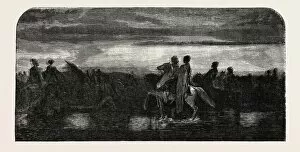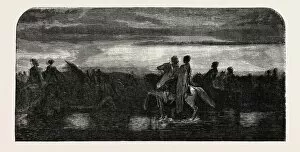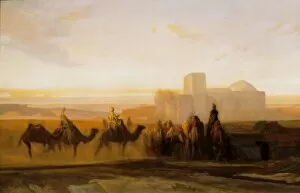Decamps Collection (#2)
"Decamps: A Master of Artistic Diversity and Captivating Scenes" Henri Jacques-Guillaume Clarke, known by his artistic pseudonym Alexandre-Gabriel Decamps
All Professionally Made to Order for Quick Shipping
"Decamps: A Master of Artistic Diversity and Captivating Scenes" Henri Jacques-Guillaume Clarke, known by his artistic pseudonym Alexandre-Gabriel Decamps, was a French artist who left an indelible mark on the art world during the 19th century. Born in 1803 and passing away in 1860, Decamps showcased his immense talent through various mediums and subjects. One of his notable works is "Grands Sauteurs. " from La Caricature, created between 1823 and 1860. This piece exemplifies Decamps' ability to capture humor and satire with finesse. His attention to detail brings life to each character depicted, showcasing his keen observation skills. In "The Kennel, " part of the series Hunting Scenes from 1829, Decamps showcases his mastery in capturing animals' essence within their natural habitat. The vividness of this painting transports viewers into a lively hunting scene filled with excitement and anticipation. It also delved into portraying human relationships with animals as seen in "The Boy from Savoy and His Monkey" (1823). This heartwarming depiction highlights the bond between a young boy and his primate companion, evoking emotions that resonate across time. His versatility shines through in pieces like "Standing Turk" (1831), where he explores cultural diversity through portraiture. With meticulous brushstrokes, he captures not only physical features but also conveys depth beyond what meets the eye. "The Climb, " another work from the Hunting Scenes series (1829), demonstrates Decamp's ability to portray action-filled moments while maintaining harmony within composition. The intensity of this painting leaves viewers captivated by its dynamic energy. Decamp's dedication to realism is evident in "Wolf Hunt: Wounded Animal Attacked by Dogs. " Created as part of the Hunting Scenes series (1829), it depicts a dramatic struggle between predator and prey, showcasing his ability to evoke emotions through his art.









